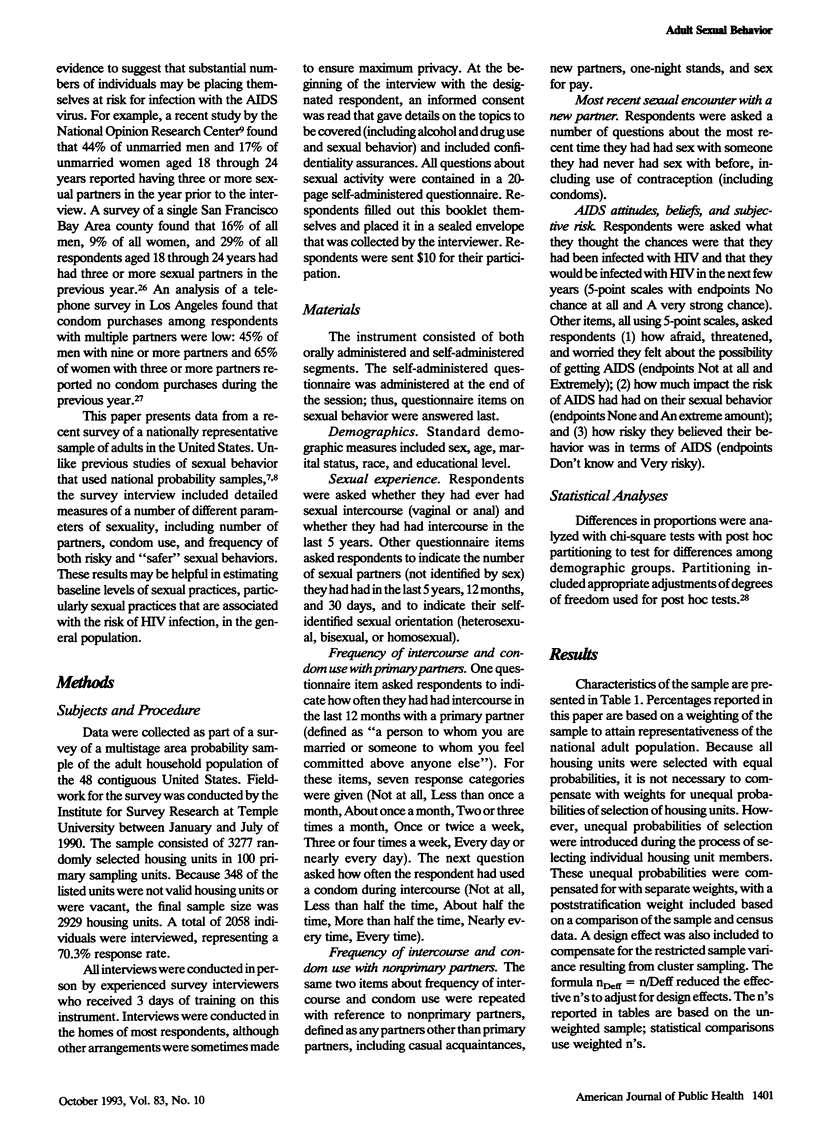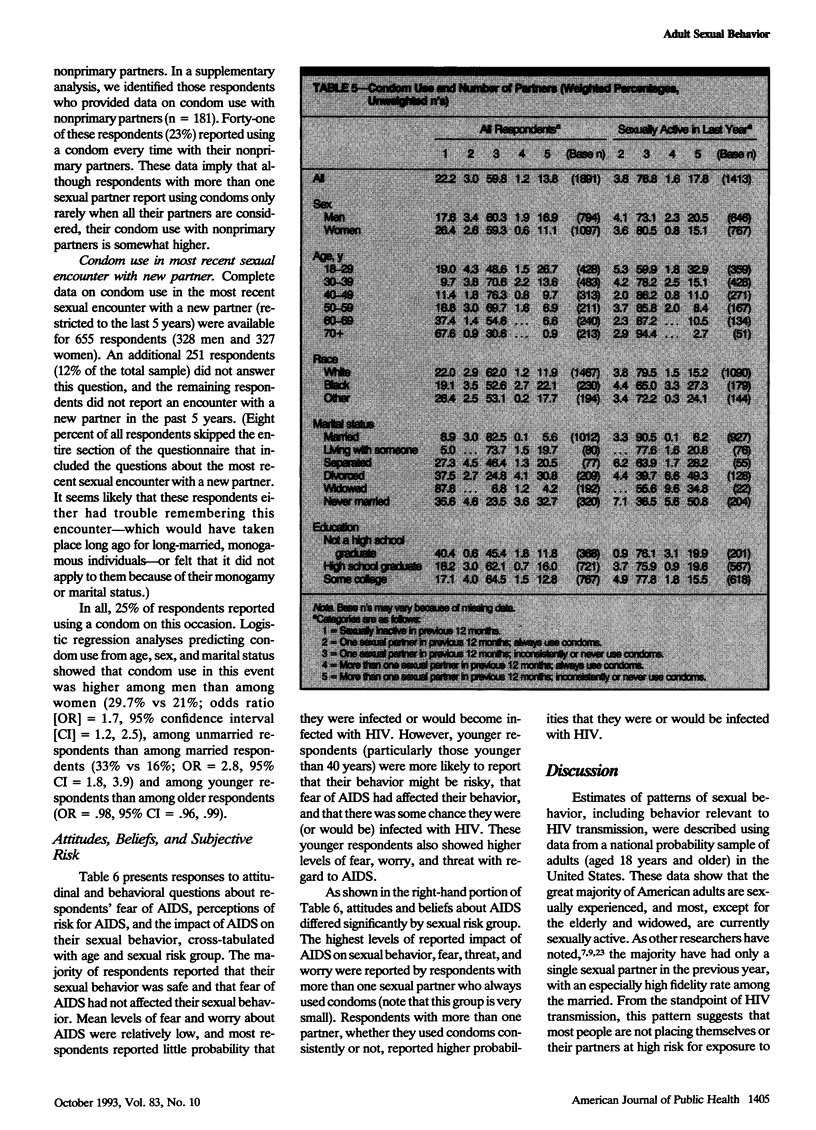Abstract
OBJECTIVES. One consequence of the acquired immunodeficiency syndrome (AIDS) epidemic has been to highlight the need for population-based estimates of the number of individuals engaging in sexual behaviors that place them at risk for human immunodeficiency virus (HIV) infection. This paper describes the prevalence of various sexual behaviors in a nationally representative sample of adults in the United States. METHODS. Data were collected as part of a household probability survey of adults (n = 2058) in the United States. Data collected on sexual behavior included sexual orientation, frequency of intercourse, condom use, and number of sexual partners. RESULTS. Nearly all respondents were sexually experienced. Of those who were currently sexually active, 13% (1% of married respondents) had had sex with more than one partner in the previous year. Of those reporting having intercourse with more than one partner in the previous year, 7% used condoms consistently and 23% used condoms consistently with their casual partners. CONCLUSIONS. A significant proportion of individuals were found to have intercourse with multiple partners without using condoms. A minority of these respondents acknowledged that their behavior may place them at risk for HIV transmission.
Full text
PDF








Selected References
These references are in PubMed. This may not be the complete list of references from this article.
- Centers for Disease Control (CDC) Number of sex partners and potential risk of sexual exposure to human immunodeficiency virus. MMWR Morb Mortal Wkly Rep. 1988 Sep 23;37(37):565–568. [PubMed] [Google Scholar]
- Cochran S. D., Mays V. M. Sex, lies, and HIV. N Engl J Med. 1990 Mar 15;322(11):774–775. doi: 10.1056/NEJM199003153221111. [DOI] [PMC free article] [PubMed] [Google Scholar]
- Cummings K. M., Becker M. H., Maile M. C. Bringing the models together: an empirical approach to combining variables used to explain health actions. J Behav Med. 1980 Jun;3(2):123–145. doi: 10.1007/BF00844986. [DOI] [PubMed] [Google Scholar]
- Fay R. E., Turner C. F., Klassen A. D., Gagnon J. H. Prevalence and patterns of same-gender sexual contact among men. Science. 1989 Jan 20;243(4889):338–348. doi: 10.1126/science.2911744. [DOI] [PubMed] [Google Scholar]
- Forrest J. D., Singh S. The sexual and reproductive behavior of American women, 1982-1988. Fam Plann Perspect. 1990 Sep-Oct;22(5):206–214. [PubMed] [Google Scholar]
- Gagnon J. H. Sex research and sexual conduct in the era of AIDS. J Acquir Immune Defic Syndr. 1988;1(6):593–601. [PubMed] [Google Scholar]
- Hofferth S. L., Kahn J. R., Baldwin W. Premarital sexual activity among U.S. teenage women over the past three decades. Fam Plann Perspect. 1987 Mar-Apr;19(2):46–53. [PubMed] [Google Scholar]
- Janz N. K., Becker M. H. The Health Belief Model: a decade later. Health Educ Q. 1984 Spring;11(1):1–47. doi: 10.1177/109019818401100101. [DOI] [PubMed] [Google Scholar]
- Newcomer S. F., Udry J. R. Oral sex in an adolescent population. Arch Sex Behav. 1985 Feb;14(1):41–46. doi: 10.1007/BF01541351. [DOI] [PubMed] [Google Scholar]
- Reinisch J. M., Sanders S. A., Ziemba-Davis M. The study of sexual behavior in relation to the transmission of human immunodeficiency virus. Caveats and recommendations. Am Psychol. 1988 Nov;43(11):921–927. doi: 10.1037//0003-066x.43.11.921. [DOI] [PubMed] [Google Scholar]
- Temple M. T. Patterns of sexuality in a high-risk sample: results from a survey of new intakes at a county jail. Arch Sex Behav. 1993 Apr;22(2):111–129. doi: 10.1007/BF01542361. [DOI] [PubMed] [Google Scholar]
- Turner C. F. Research on sexual behaviors that transmit HIV: progress and problems. AIDS. 1989;3 (Suppl 1):S63–S69. doi: 10.1097/00002030-198901001-00010. [DOI] [PubMed] [Google Scholar]


